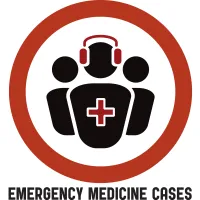
EM Quick Hits 64 Whole Blood Transfusions, Calcium Before Diltiazem in Afib, Thoracotomy Pearls, Uterine Casts, OMI Scale & Proportionality
View Transcript
Episode Description
Topics in this EM Quick Hits podcast
Zafar Qasim & Andrew Petrosoniak on whole blood transfusion in trauma (1:32)
Justin Morgenstern on calcium pre-treatment to prevent diltiazem-induced hypotension (29:57)
Kiran Rikhraj on dynamic LV outflow tract obstruction (36:35)
Anand Swaminathan on resuscitative thoracotomy (42:35)
Andrew Tagg on uterine casts (48:22)
Jesse McLaren on scale & proportionality in occlusion MI ECG interpretation (53:38)
Podcast production, editing and sound design by Anton Helman
Podcast content, written summary & blog post by Brandon Ng, edited by Anton Helman, April, 2025
Cite this podcast as: Helman, A. Swaminathan, A. Qasim, Z, M. Petrosoniak, A. Rikhraj, K, Tagg, A. Morgenstern J. EM Quick Hits 64 Whole Blood Transfusions, Calcium Before Diltiazem in Afib, Thoracotomy Pearls, Uterine Casts, OMI Scale & Proportionality. Emergency Medicine Cases. April, 2025 https://emergencymedicinecases.com/em-quick-hits-month-year/. Accessed August 16, 2025.
Whole blood transfusions in trauma resuscitation: Better than component therapy?
Current Practice: Most centers use component therapy (RBCs, plasma, platelets) with a 1:1:1 ratio based on evidence from the PROPPR trial (Holcomb et al. 2015) rather than whole blood tranfusions. However, there is a recent shift in some U.S. centers towards adopting whole blood therapy in trauma resuscitation.
Benefits of whole blood transfusion therapy
(Typically refers to cold-stored low-titer O whole blood in civilian practices)
* Simplicity: Simpler to administer and logistically less complex than separate components, with universal compatibility and no need to balance component ratios.
* Evidence: Observational studies in military settings show improved early survival with warm fresh whole blood compared to component therapy (Gurney et al. 2020, Shackelford et al. 2021).
* Physiologic advantages: Provides higher hematocrit, platelet counts, and clotting factor content in a whole blood unit when compared to equivalent component therapy.
* Safety: May have fewer transfusion-related complications.
Arguments against using whole blood transfusions, challenges to implementation
* Limited RCT Evidence: Robust RCT evidence is lacking to support widespread adoption; data to support whole blood as superior to component therapy is primarily observational.
* Rh Sensitization Risk: Potential for alloimmunization in Rh- women of childbearing age receiving Rh+ whole blood, posing a risk for hemolytic disease of the newborn in future pregnancies.
* Logistics: Supply is very dependent on donor availability, which can fluctuate.
* Storage: Platelet function declines over time in stored whole blood. Solutions include rotating stock to high-usage centers or converting near-expiry units to component products.
Read more about massive hemorrhage protocols in Ep 152 “The 7 Ts of Massive Hemorrhage Protocols”
How Can Whole Blood be Used in a Massive Hemorrhage Protocol?
* Example protocol from Dr. Qasim: Patients who present with an ABC score ≥2 (e.g., penetrating trauma, hypotension, +FAST, tachycardia) receive up to 4 units of whole blood before switching to component therapy.
* Observational studies suggest earlier is better: every minute delay beyond 14 mins may worsen survival outcomes (Torres et...
Zafar Qasim & Andrew Petrosoniak on whole blood transfusion in trauma (1:32)
Justin Morgenstern on calcium pre-treatment to prevent diltiazem-induced hypotension (29:57)
Kiran Rikhraj on dynamic LV outflow tract obstruction (36:35)
Anand Swaminathan on resuscitative thoracotomy (42:35)
Andrew Tagg on uterine casts (48:22)
Jesse McLaren on scale & proportionality in occlusion MI ECG interpretation (53:38)
Podcast production, editing and sound design by Anton Helman
Podcast content, written summary & blog post by Brandon Ng, edited by Anton Helman, April, 2025
Cite this podcast as: Helman, A. Swaminathan, A. Qasim, Z, M. Petrosoniak, A. Rikhraj, K, Tagg, A. Morgenstern J. EM Quick Hits 64 Whole Blood Transfusions, Calcium Before Diltiazem in Afib, Thoracotomy Pearls, Uterine Casts, OMI Scale & Proportionality. Emergency Medicine Cases. April, 2025 https://emergencymedicinecases.com/em-quick-hits-month-year/. Accessed August 16, 2025.
Whole blood transfusions in trauma resuscitation: Better than component therapy?
Current Practice: Most centers use component therapy (RBCs, plasma, platelets) with a 1:1:1 ratio based on evidence from the PROPPR trial (Holcomb et al. 2015) rather than whole blood tranfusions. However, there is a recent shift in some U.S. centers towards adopting whole blood therapy in trauma resuscitation.
Benefits of whole blood transfusion therapy
(Typically refers to cold-stored low-titer O whole blood in civilian practices)
* Simplicity: Simpler to administer and logistically less complex than separate components, with universal compatibility and no need to balance component ratios.
* Evidence: Observational studies in military settings show improved early survival with warm fresh whole blood compared to component therapy (Gurney et al. 2020, Shackelford et al. 2021).
* Physiologic advantages: Provides higher hematocrit, platelet counts, and clotting factor content in a whole blood unit when compared to equivalent component therapy.
* Safety: May have fewer transfusion-related complications.
Arguments against using whole blood transfusions, challenges to implementation
* Limited RCT Evidence: Robust RCT evidence is lacking to support widespread adoption; data to support whole blood as superior to component therapy is primarily observational.
* Rh Sensitization Risk: Potential for alloimmunization in Rh- women of childbearing age receiving Rh+ whole blood, posing a risk for hemolytic disease of the newborn in future pregnancies.
* Logistics: Supply is very dependent on donor availability, which can fluctuate.
* Storage: Platelet function declines over time in stored whole blood. Solutions include rotating stock to high-usage centers or converting near-expiry units to component products.
Read more about massive hemorrhage protocols in Ep 152 “The 7 Ts of Massive Hemorrhage Protocols”
How Can Whole Blood be Used in a Massive Hemorrhage Protocol?
* Example protocol from Dr. Qasim: Patients who present with an ABC score ≥2 (e.g., penetrating trauma, hypotension, +FAST, tachycardia) receive up to 4 units of whole blood before switching to component therapy.
* Observational studies suggest earlier is better: every minute delay beyond 14 mins may worsen survival outcomes (Torres et...